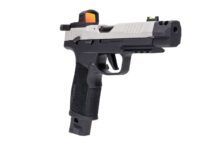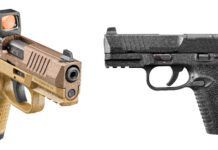In March 2005 we looked at the FN FiveseveN IOM model pistol (hereafter referred to as the 5.7). At the time, there was nothing else on the market to compare it to, so Contributing Editor Roger Eckstine covered it as a one-gun “Range Bag” report. In that review, he said, “Designed as a companion to the FN P90 Submachine gun, the FN Five Seven pistol is a lightweight polymer pistol chambered for 5.728mm ammunition. The 5.728mm round features a necked-down case similar to but smaller than the 223 Remington round….” That report continued, “Initially, sales of the Five Seven pistol were intended to be limited to military and law-enforcement
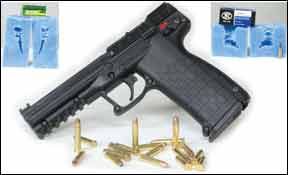
personnel because the 5.728mm ammunition is available with armor-piercing bullets. However, the FN Five Seven pistol is now available to civilians.
“We loaded our 10-round magazines with the FN-supplied 31-grain open-tipped FMJ rounds and headed to the range. We found the FN Five Seven to be a very lightweight pistol, weighing only 21 ounces unloaded. To house the overall length of the rounds, the grip was longer front to back than those found on most pistols, making it a little harder to connect the hands when using a two-hand grip. Right-handed shooters had to work a little harder to get their thumbs around to press the magazine release. In fact, the safety release and the slide-release levers were in opposite positions from what we are used to. The slide release was to the rear, and the ambidextrous thumb safety was located above the trigger so that the shooter had to use the weak-hand thumb or trigger finger to operate the safety. All levers were polymer, just like the frame and top-end shroud.”
And the money graf from the original report: “Buy It. We’re not entirely settled on the fight-stopping capability of the civilian-issue 5.728mm ball ammunition, but we feel FN did an excellent job of bringing together design features such as a fine trigger, manual safety, a first-class accessory rail, ease of maintenance, and foolproof accuracy in an ultra-lightweight package.”
Well, that was then, and this is now. In the last year, Kel-Tec CNC Industries of Cocoa, Florida, has brought out the PMR-30, chambered in 22 Winchester Magnum Rimfire, a gun influenced by Swedish designer and Kel-Tec founder George Kellgren’s Grendel P30 22 Magnum autoloader. But even the P30 was predated by earlier 22 WMR autoloaders by AMT (the AutoMag II is now made by High Standard) and Excel Industries (MP-22, www.ExcelArms.com). All in, the PMR-30 is slightly lighter than the 5.7, and it has a 30-round magazine, 10 more than the FN’s 20-rounder. They both fire 40-grain projectiles of nearly the same diameter, but at different velocities. Before we get to the guns, let’s examine how the cartridges compare.
22 WMR versus 5.7x28mm FN
The 22 Winchester Magnum Rimfire, more commonly called 22 WMR, 22 Magnum, or simply 22 Mag, is a rimfire rifle cartridge. It was introduced in 1959 by Winchester and has been chambered in a variety of firearms, such as the Model 61 slide rifle, Smith & Wesson and Ruger revolvers, and Savage’s Model 24, a 22 WMR/.410 combination rifle, and many bolt rifles. The 22 WMR uses a larger case than the 22 Long Rifle, in part because the 22 WMR case is a lengthened version of the older 22 WRF. A 22 WMR round will not fit into the chamber of a 22 LR firearm, but it is possible (and dangerous) to chamber and fire 22 LR rounds in a 22 WMR firearm. The 22 LR case can split open and stick, and the Long Rifle bullet will travel in the magnum chamber unsupported for four-tenths of an inch before entering the barrel, causing leading in the chamber.
The FN 5.728mm is a small-caliber, high-velocity cartridge
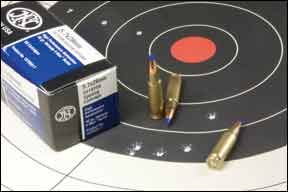
designed and manufactured by FN Herstal. The bottlenecked centerfire cartridge resembles the 22 Hornet or 22 K-Hornet.
Availability and load choice isn’t even a close call. On MidwayUSA.com we found 32 offerings of 22 WMR for sale from Speer, Fiocchi (the Kel-Tec manual warns against using foreign ammo), Hornady, CCI, Winchester, Federal, Armscor, and Remington in bullet weights of 28, 30, 33, 34, 40, 45, 50, and 52 grains. Bullet styles included lead hollowpoint (HP), jacketed hollowpoint (JHP), Flex Tip eXpanding (Hornady FTX), polymer-tip V-Max (Hornady) and AccuTip (Remington), shotshell (CCI, No. 12 shot, not for semiautos), total metal jacket and full metal jacket, jacketed spire point, plated lead hollowpoint, and jacketed soft point. Conversely, Midway listed only 27- and 40-grain 5.728mm loads, both FN brands. We bought and fired only the FN SS197SR 5.728mm 40-grain Hornady V-Max, $25.49/50 (Midway #428067). Cost per cartridge was 51 cents.
We tested ten 22 WMR samples in the Kel-Tec for function and reliability and initial accuracy testing. We encountered no function problems with any of the 10 brands. We selected the most powerful three rounds for chrono and full accuracy reporting. Our final samples were the Winchester Dynapoint 22 Winchester Magnum Rimfire 45-grain plated-lead hollowpoint USA22M, $8.79/50 (Midway #225402); Winchester Super-X 22 WMR 40-grain JHP, $10.79/50 (Midway #191017); and Remington 22 WMR 40-grain Pointed Soft Point, $12.79/50 (Midway #849094). Costs per cartridge were, respectively, 18 cents, 22 cents, and 26 cents.
Naturally, we saw dropoffs in velocity from the rounds’ rifle-rated figures to what our handguns produced. The FN 5.7 cartridge is rated to produce 2034 fps/256 ft.-lbs. in a rifle barrel. Results in our pistol were 1678 fps, an 18% drop. (We also shot an original FN 5.7 to see how the older model compared to the newer. The older version produced 1689 fps, a statistically insignificant 11 fps difference from the newer.) The Super-X 22 WMR’s rifle ratings are 1910 fps/324 ft.-lbs., and we got 1339 fps/159 ft.-lbs., a 30% markdown. The Dynapoint produced 25% less velocity rifle to handgun (1550 fps/1160 fps), and the Remington came in at 1910 fps/1234 fps, or a 35% drop.
Looking at those energy differences would suggest better terminal performance for the 5.7, but our tests of the two in a channel-forming media suggest otherwise. We used several tubes of Ballistic Technology’s wax-like, easy-to-use Handgun Bullet Test Tubes (#100-002-900, $28) to take the guesswork out of determining terminal bullet performance. We were able to accurately measure penetration, retained bullet weight, expansion, and wound-cavity size for the two rounds and found the magnum more than holds its own with the 5.7. At close range we fired one 5.7 round into the 11-inch-long, 3.5-inch-wide Handgun Test Tube. It carved out a 60-ml channel (total water volume) up to 1.2 inches wide, but didn’t exit the tube. A second 5.7 opened a 75-ml channel, and also didn’t exit the tube. For the 22 WMR, we first tried one tube, since it was “only” a 22 Mag. The Bullet Test Tube states that one tube is sufficient for 9mm through 45 ACP cartridges, and two tubes should be used for magnum loads. The Remington PSP had enough energy to punch a quarter-inch-wide and half-inch-long hole through the metal end of the tube, exiting an entire tube length. So we reshot it with two tubes. The round punched 4 inches deep into the second tube (15 inches overall penetration) and created a 60-ml wound channel. The Super-X didn’t exit the first tube (the mushroomed bullet stuck inside the tube cap) and created a 66-ml channel. The Dynapoint traveled 14 inches into the media and chewed out a 50-ml channel.
All in, we thought the performance of the Remington 22 Magnum PSP was the best of any ammunition tested. We liked how the bullet mushroomed and held together. The other 22 WMR rounds we tested broke up into much smaller pieces. If we were going to carry the PMR-30 for self-defense, it would be loaded with the PSP rounds.
Now, how did these rounds perform in the pistols? Let’s find out.
FNH-USA Five-seveN USG FDE Handgun
3868929232 5.7x28mm, $1039
The 5.7 is a full-sized pistol, but it isn’t heavy, weighing in at 27.8 ounces with a fully loaded 20-round polymer magazine in place. Carrying the 5.7 fully loaded with the two spares gives the owner 61 cartridges at the ready. Models are available with matte black, olive drab green, or Flat Dark Earth frames with a choice of adjustable
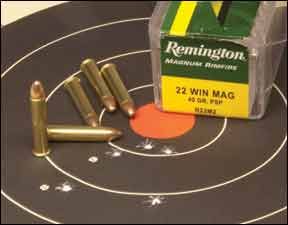
target sights or fixed three-dot combat sights. Among the FDE models like our test gun, the No. 3868929230 unit has adjustable sights. Elsewhere, the new FN box is larger than the original, but the new package lacks a cleaning kit found in the older one.
The USG model is similar to, but not identical to, the IOM we tested six years ago. The FN measures 8.2 inches in OAL, carrying a 4.75-inch stainless, chrome-lined barrel with 1:9 twist. The gun stands 5.7 inches tall and weighs 24.2 ounces unloaded and 27.8 ounces loaded when it’s stoked with 21 rounds. The FDE-colored (aka brown) polymer frame undergirds the slide, which carries a black-polymer cover to reduce weight. The rear ends of the cover have cocking serrations. The grip is aggressively stippled and grooved. This version has aggressive checkering on the front and back of the grip. The magazine release is extended, and both the safety and magazine release have vertical grooves on them. The trigger guard is straight on the bottom instead of the IOM’s unusual double-rounded appearance. However, the USG’s guard is large and would easily accommodate gloved fingers.
The ambidextrous safety is in an unusual location midway down the frame just above the trigger. The safety can be reached by the trigger finger or with the thumb of the support hand. It cannot be reached with the shooting-hand thumb. This is another advantage for Kel-Tec, whose ambidextrous thumb safety was more easily operated, our testers said. As a result, the safety can be operated faster on the Kel-Tec, so all other things being equal, it would get the shot off first.
We had one failure to extract and eject with the FN. When we inspected the shell casing, we found a long crack down the side of the case. We also found a second shell casing with a similar crack, but that one did extract and eject. All of the other cases we found were intact, so we suspect faulty ammunition. None of the 22 WMR ammunition had that problem, and there was a wide selection of it.
Both FN models have a magazine disconnect safety as well. Our testers did not like this feature. Advantage to Kel-Tec, which does not have a magazine disconnect. However, the FN has a loaded-chamber indicator the PMR-30 lacks.
The FN’s 20-round factory magazines worked flawlessly, but to bring the 5.7 on par with the PMR-30 on round count, we also purchased a ProMag 30-round magazine, which extended far below the grip. It would accept 33 rounds, but we experienced failures to feed if we loaded more than 28 rounds.
The fixed sights are targeted at 25 feet using SS195 ammunition, according to FN. To change the horizontal setting of the rear sight, you’ve got to remove the slide assembly from the frame of the pistol, put it in a vise, and use a 0.05-inch Allen key to loosen the small screw on top of the rear sight. Then, using a 3⁄32-inch drift punch and a small hammer, slightly move the rear sight towards the right or left side in its housing in the slide assembly. On both sides of the slide, a hole has been provided to reach the dovetail of the rear sight with the drift punch.
To take the 5.7 down, ensure that the pistol is unloaded, point it in a safe direction, and then pull the trigger to decock the hammer. Set the manual safety at the (raised) safe position. To remove the slide
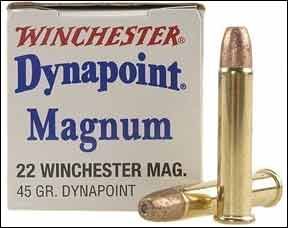
assembly from the frame of the pistol, hold the pistol in the right hand and with the palm of the left hand, push the slide about a quarter-inch rearward and hold it in that position. At the same time, using the left thumb push the takedown lever completely rearwards and hold it in that position. Release the slide so that it moves back forward. With the right thumb, push forward on the rear end of the slide to disengage the complete slide assembly from the frame. Lift the slide assembly up and off the frame. With the slide assembly held upside down, disengage the rear end of the barrel. Take the barrel out of the slide. Reassemble in reverse order.
Our Team Said: Shooting the 5.7 is fun. Thanks to the excellent trigger, light recoil, mild muzzle flip, and capacious magazine, we blistered targets at a rapid rate. Lock into it and the slide pistons back and forth as empties fly out. When the magazine runs dry, slap another one home, hit the slide release, and keep going. Practical accuracy is excellent, and man-sized targets are easy to hit. But these same traits appear in the PMR-30 for half the price.
Kel-Tec PMR-30 No. 408320267 22 WMR, $425
Made in the USA, these pistols are very hard to find. Although the MSRP is $425, the going price on Auction Arms is $525 because of the short supply and high demand. Hopefully, production levels will increase because everyone we showed this gun to liked it. Everyone who shot it loved it. Most shooters said, “It feels like a toy, it is so light” when they picked it up. Initially, we thought about it as a plinking gun, but a growing number of people are considering it for self-defense.
Sometimes the ammunition follows the gun. When the Taurus Judge was introduced, there were not many choices for self-defense specific ammunition in .410. Now Winchester produces .410 shotshells in the PDX line. Hornady just announced 22 WMR in the company’s Critical Defense line, but it isn’t available yet. If the CD ammunition is effective, the PMR-30 gun could be a game-changer. Gun buyers switched from revolvers to semi-auto pistols to go from 6 rounds to 12 or 15. Some are flocking to the Kel-Tec to go from 15 to 30 rounds. The reason: At the conclusion of a gun fight, no one has ever said, “I had too much ammunition.”
The PMR-30 adjusts between locked breech and blowback operation depending on the pressure of the cartridge. It uses a double-stack magazine of a new design that holds 30 rounds and fits completely in the grip of the pistol. The trigger is a crisp single action with an over-travel stop. The manual safety is a thumb-activated ambidextrous safety lever. The slide locks back after the last shot, and a manual slide-lock lever is also provided.
Early models of the PMR-30 experienced key-holing bullet impacts, in which the bullet tumbles end over end rather than spiraling. Kel-Tec did an excellent job of keeping customers apprised of delays and changes they were making to solve the problem. The company website honestly said as late as May 10, 2011, “As time has progressed, so has the PMR-30. Since the start of the year the PMR-30 has been shipping in full quantities to all of our distributors on a rotating basis (to make it fair for all distributors). Recently we have been made aware of a potential issue that we feel our customers should definitely be made aware of.
“We are in the middle of a re-design to our barrel due to key-holing concerns. For those unfamiliar with key-holing, basically it is when the bullet tumbles end over end rather than travelling stable with a solid spiral. It seems as though the 1:16 twist ratio of our barrels isn’t quite preventing these issues from occurring. We are currently testing new twist ratios for the PMR-30 so that these issues no longer occur (1:9 and 1:12).
“There has also been a cosmetic change to the barrel: we have removed the fluting on the barrel. The initial fluted design was for weight reduction; however, it was time-consuming to produce. We have created a new design that matches the weight and decreases production time significantly.” For early barrels that weren’t rifled with a 1:11 twist, the company will send a replacement barrel at no charge. (Kel-Tec also noted that CCI Maxi-Mag 40-grain ammo was a particular culprit in keyholing problems.)
The slide and barrel are made of 4140 steel housed in a 7075 aluminum frame. The grip, slide cover, trigger, mag release, and safety levers are glass-reinforced Zytel nylon, much like other Kel-Tec pistols. Other features include dual opposing extractors, heel magazine release, dovetailed aluminum front sight, Picatinny accessory rail under the barrel, urethane recoil buffer, captive coaxial recoil springs. The PMR-30 disassembles for cleaning by removal of a single pin.
Our testers said the PMR-30’s fiber-optic orange rear sight dots and green fiber-optic front sight dot gave it an advantage. The color scheme was better than the FN’s in daylight, we thought, and superior in low-light conditions. The sights on the USG were 3-dot combat-style and were lower profile than the adjustable sights on the IOM we previously tested. The 3-dot white sights on the 5.7 were of average size and worked well enough. We fired both the 5.7 and PMR-30 pistols as fast as we could pull the triggers, and the Kel-Tec showed a much tighter group on the target. Although the Kel-Tec’s less felt recoil and less muzzle flip contributed to the PMR’s smaller group size, we believe the sights helped quite a bit as well. However, if the PMR-30 were dropped, the fiber-optic sights could break.
The magazine release on the 5.7 can easily be operated with the shooter’s thumb, whereas the PMR-30 has a European-style or heel magazine release, an advantage for the FN. Also, it was an easy and straightforward procedure to load the FN magazine, unlike the KT.
The double-stack KT mag requires some finesse to load properly. If you just start pushing rounds into the PMR-30 magazine, you might only get 20 rounds loaded — as we did, until we read the manual. Loading the PMR-30’s double-stack magazine is very different from loading most other magazines. Failure to load the magazine properly can result in rim-lock, which will lead to a FTFD (failure to feed) malfunction.
To load the magazine properly, press a cartridge downward in the center of the magazine, with the rim situated within the rim window. Then slide the round back all the way before pushing another round down on top of it. After loading about five rounds, lightly tap the back of the magazine against a flat surface to help seat the rounds and keep the rims arranged correctly. Once 15 to 20 rounds have been loaded, the magazine will start to get more difficult to load, and tapping the back should be done after every one or two rounds. The last round should be on the left side of the magazine when 30 rounds are loaded. We had one failure to feed, which we suspect was due to our inexperience in loading the magazine properly. All the other fully loaded magazines worked flawlessly.
Our Team Said: We originally thought that the Kel-Tec PMR-30 might be considered a poor man’s 5.7, but now we think the KT is the better gun overall. That it’s one-third to one-half the price and ammo is one-third to one-half the price as well makes this an easy call. We hope to see a shorter barrel and shorter grip version of the PMR-30 soon.

























